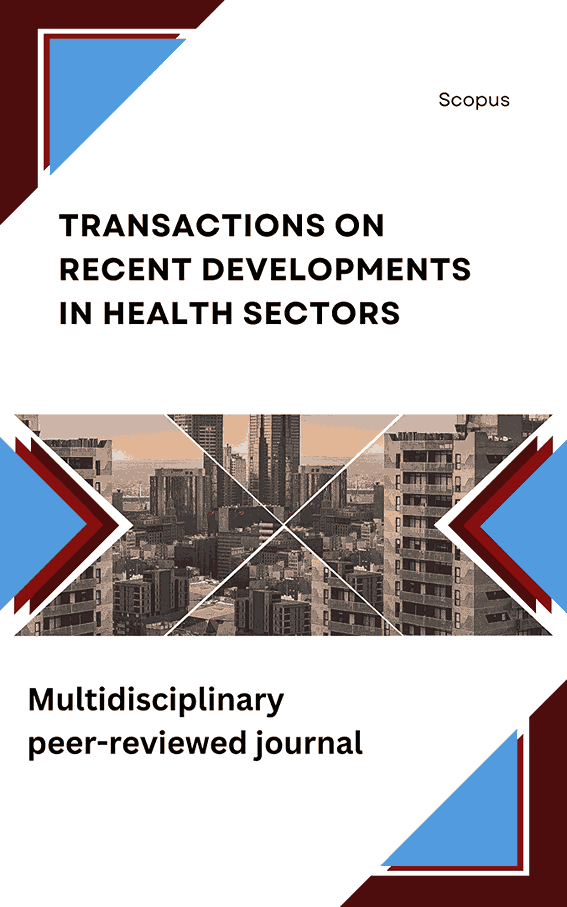Genetic and Molecular Basis of Familial Hypertrophic Cardiomyopathy: Insights into Disease Mechanisms
Abstract
Hypertrophic cardiomyopathy (HCM) is a complex genetic disorder characterized by the thickening of the heart muscle, predominantly in the ventricular septum. This paper provides a comprehensive review of the genetic and molecular basis of HCM, focusing on mutations in genes encoding sarcomeric proteins such as MYH7, MYBPC3, and TNNT2. Through a detailed analysis of current genetic data, the study explores how these mutations disrupt normal cardiac function, leading to varying phenotypic expressions. Furthermore, this paper discusses recent advancements in molecular diagnostic techniques, such as next-generation sequencing (NGS), which have enhanced the detection of pathogenic variants. Understanding the genetic mechanisms underlying HCM is crucial for improving risk stratification, genetic counseling, and the development of targeted therapies.
References
Enoka, R. M. (2015). Neuromechanics of Human Movement (5th ed.). Human Kinetics.
Folland, J. P., & Williams, A. G. (2007). The adaptation to strength training: Morphological and neurological contributions to increased strength. Sports Medicine, 37(2), 145-168. https://doi.org/10.2165/00007256-200737020-00004
Gandevia, S. C. (2001). Spinal and supraspinal factors in human muscle fatigue. Physiological Reviews, 81(4), 1725-1789. https://doi.org/10.1152/physrev.2001.81.4.1725
Herda, T. J., Cramer, J. T., Ryan, E. D., McHugh, M. P., & Stout, J. R. (2008). Acute effects of static versus dynamic stretching on isometric peak torque, electromyography, and mechanomyography of the biceps femoris muscle. Journal of Strength and Conditioning Research, 22(3), 809-817. https://doi.org/10.1519/JSC.0b013e31816a83a4
Hill, A. V. (1938). The heat of shortening and the dynamic constants of muscle. Proceedings of the Royal Society of London. Series B, Biological Sciences, 126(843), 136-195. https://doi.org/10.1098/rspb.1938.0050
Huxley, A. F. (1957). Muscle structure and theories of contraction. Progress in Biophysics and Biophysical Chemistry, 7, 255-318.
Jones, D. A., & Rutherford, O. M. (1987). Human muscle strength training: The effects of three different regimens and the nature of the resultant changes. Journal of Physiology, 391(1), 1-11. https://doi.org/10.1113/jphysiol.1987.sp016717
Kawakami, Y., Ichinose, Y., & Fukunaga, T. (1998). Architectural and functional features of human triceps surae muscles during contraction. Journal of Applied Physiology, 85(2), 398-404. https://doi.org/10.1152/jappl.1998.85.2.398
Kubo, K., Kanehisa, H., & Fukunaga, T. (2002). Effects of resistance and stretching training programs on the viscoelastic properties of human tendon structures in vivo. Journal of Applied Physiology, 92(2), 595-601. https://doi.org/10.1152/japplphysiol.00658.2001
McArdle, W. D., Katch, F. I., & Katch, V. L. (2010). Exercise Physiology: Nutrition, Energy, and Human Performance (7th ed.). Lippincott Williams & Wilkins.
Muthu, P., Mettikolla, P., Calander, N., Luchowski, R., Gryczynski, I., Gryczynski, Z., ... & Borejdo, J. (2010). Single molecule kinetics in the familial hypertrophic cardiomyopathy D166V mutant mouse heart. Journal of molecular and cellular cardiology, 48(5), 989-998.
Krupa, A., Fudala, R., Stankowska, D., Loyd, T., Allen, T. C., Matthay, M. A., ... & Kurdowska, A. K. (2009). Anti-chemokine autoantibody: chemokine immune complexes activate endothelial cells via IgG receptors. American journal of respiratory cell and molecular biology, 41(2), 155-169.
Mettikolla, P., Calander, N., Luchowski, R., Gryczynski, I., Gryczynski, Z., Zhao, J., ... & Borejdo, J. (2011). Cross-bridge kinetics in myofibrils containing familial hypertrophic cardiomyopathy R58Q mutation in the regulatory light chain of myosin. Journal of theoretical biology, 284(1), 71-81.
Mettikolla, P., Calander, N., Luchowski, R., Gryczynski, I., Gryczynski, Z., & Borejdo, J. (2010). Kinetics of a single cross-bridge in familial hypertrophic cardiomyopathy heart muscle measured by reverse Kretschmann fluorescence. Journal of Biomedical Optics, 15(1), 017011-017011.
Mettikolla, P., Luchowski, R., Gryczynski, I., Gryczynski, Z., Szczesna-Cordary, D., & Borejdo, J. (2009). Fluorescence lifetime of actin in the familial hypertrophic cardiomyopathy transgenic heart. Biochemistry, 48(6), 1264-1271.
Mettikolla, P., Calander, N., Luchowski, R., Gryczynski, I., Gryczynski, Z., & Borejdo, J. (2010). Observing cycling of a few cross‐bridges during isometric contraction of skeletal muscle. Cytoskeleton, 67(6), 400-411.
Muthu, P., Mettikolla, P., Calander, N., & Luchowski, R. 458 Gryczynski Z, Szczesna-Cordary D, and Borejdo J. Single molecule kinetics in, 459, 989-998.
Borejdo, J., Mettikolla, P., Calander, N., Luchowski, R., Gryczynski, I., & Gryczynski, Z. (2021). Surface plasmon assisted microscopy: Reverse kretschmann fluorescence analysis of kinetics of hypertrophic cardiomyopathy heart.
Mettikolla, Y. V. P. (2010). Single molecule kinetics in familial hypertrophic cardiomyopathy transgenic heart. University of North Texas Health Science Center at Fort Worth.
Mettikolla, P., Luchowski, R., Chen, S., Gryczynski, Z., Gryczynski, I., Szczesna-Cordary, D., & Borejdo, J. (2010). Single Molecule Kinetics in the Familial Hypertrophic Cardiomyopathy RLC-R58Q Mutant Mouse Heart. Biophysical Journal, 98(3), 715a.






